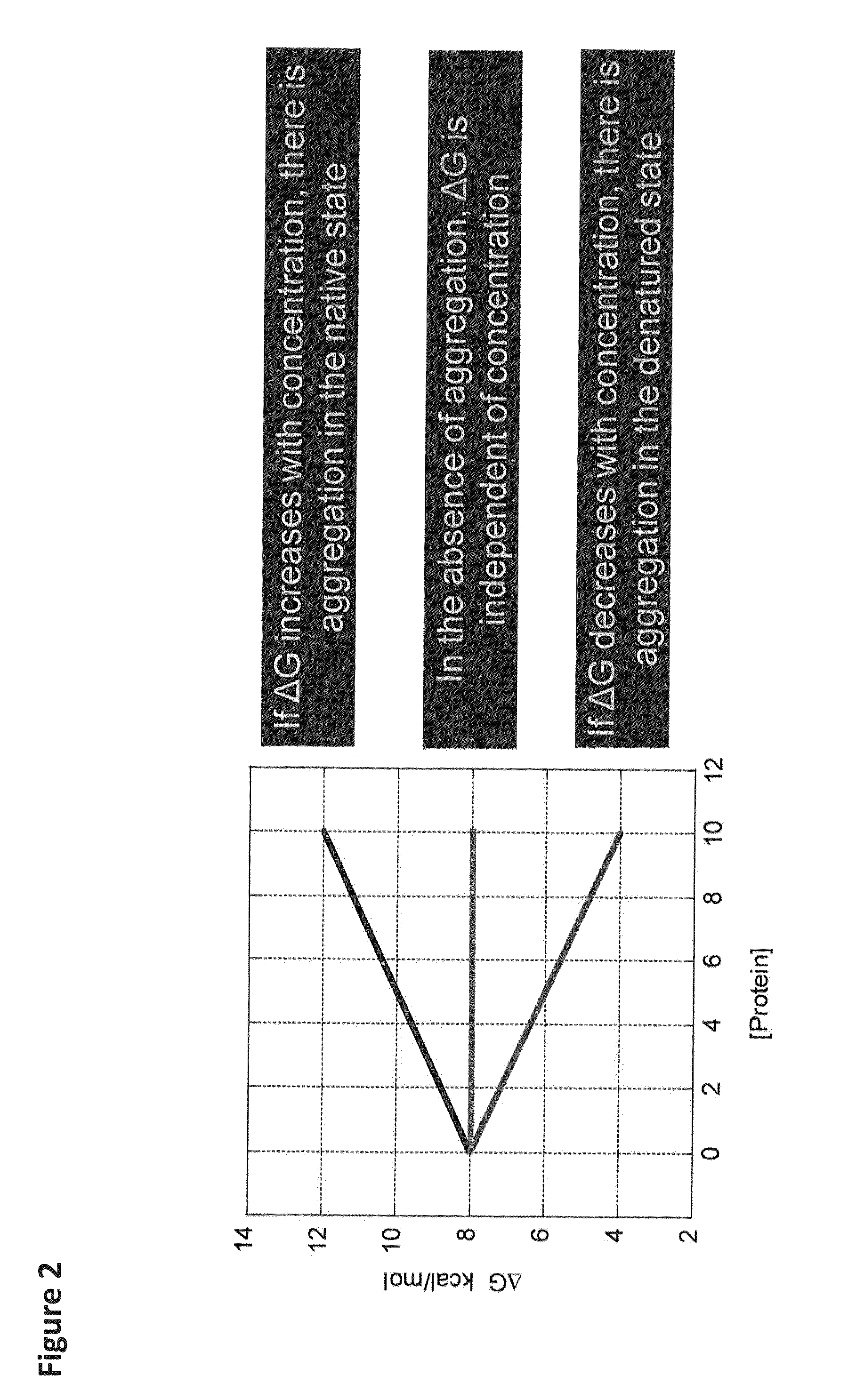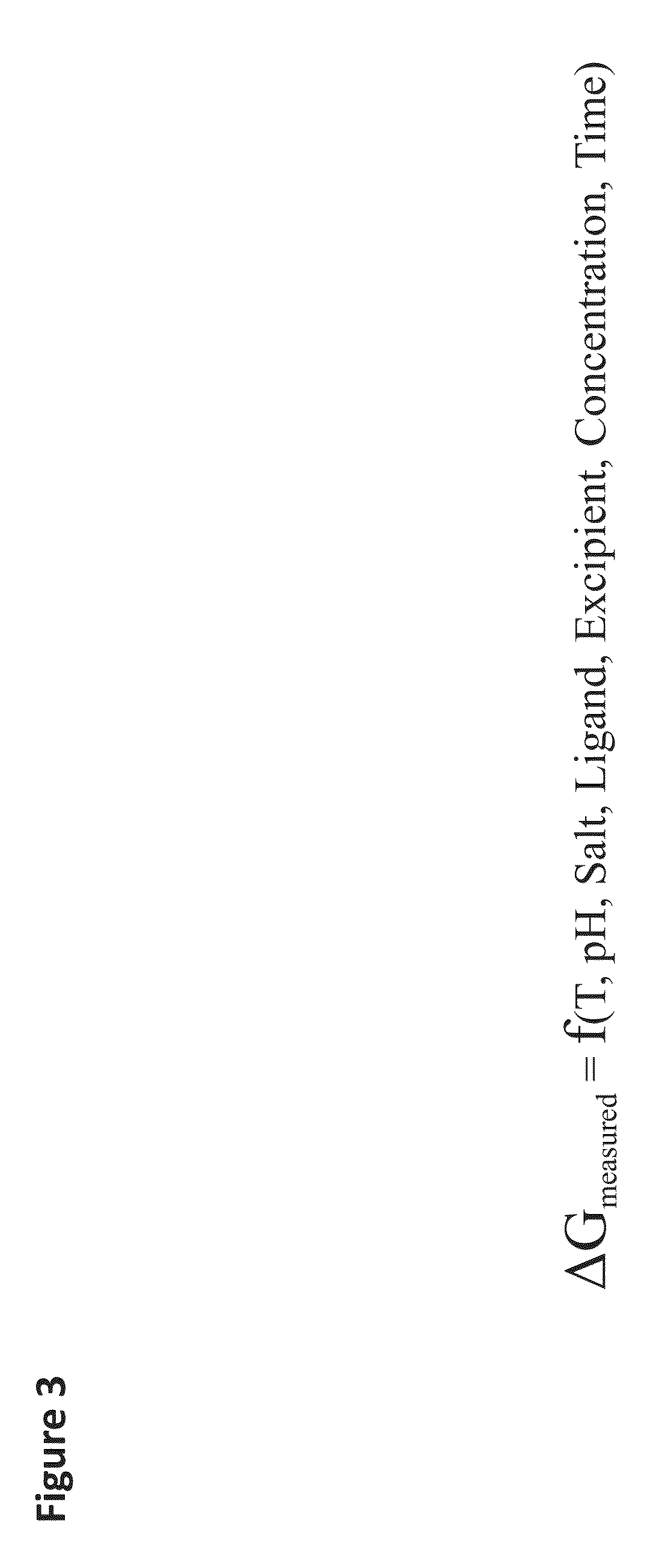Determination of Protein Aggregation from the Concentration Dependence of Delta G
a concentration dependence and protein technology, applied in the direction of material analysis, instrumentation, library screening, etc., can solve the problems of reducing the effective dose of the formulation, affecting the aggregation of proteins, so as to reduce the aggregation and the effect of extending the long-term stability and reducing the tendency
- Summary
- Abstract
- Description
- Claims
- Application Information
AI Technical Summary
Benefits of technology
Problems solved by technology
Method used
Image
Examples
Embodiment Construction
[0063]The present invention relates to methods and systems for recognizing and characterizing protein aggregation processes at the earliest possible time and use of such new methods and systems for (1) the identification and selection of protein formulations that minimize aggregation and extend long-term stability and (2) the identification of protein variants with the lowest tendency to aggregate.
[0064]The present invention provides a method that allows quantitative determination of the amount of aggregated protein rapidly (e.g., within 24 hours). This novel approach is based upon the concentration dependence of the Gibbs energy of stability (ΔG) of a protein. Measuring ΔG at different protein concentrations provides the necessary information to calculate the amount of protein that is aggregated in either the denatured or native states. In general, if ΔG decreases with protein concentration, aggregation in the denatured state occurs, whereas if ΔG increases with protein concentrati...
PUM
 Login to View More
Login to View More Abstract
Description
Claims
Application Information
 Login to View More
Login to View More - R&D
- Intellectual Property
- Life Sciences
- Materials
- Tech Scout
- Unparalleled Data Quality
- Higher Quality Content
- 60% Fewer Hallucinations
Browse by: Latest US Patents, China's latest patents, Technical Efficacy Thesaurus, Application Domain, Technology Topic, Popular Technical Reports.
© 2025 PatSnap. All rights reserved.Legal|Privacy policy|Modern Slavery Act Transparency Statement|Sitemap|About US| Contact US: help@patsnap.com



